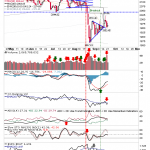Back on May 26, 2017, shortly after Moody’s downgrade of China, Beijing “moved the goalposts” in its bid to reduce yuan volatility, to punish currency manipulators (read Yuan shorts) and limit capital outflows (the currency had weakened for three straight years, triggering draconian capital controls and the surge of bitcoin) when the May 26, 2017a new “counter-cyclical factor” to reduce exchange-rate volatility while undermining efforts to increase the role of market forces.
As we explained at the time, under the new reference rate formula unveiled by the PBOC, institutions that provide quotes for the fixing would add an “intangible” counter-cyclical factor to their existing models, which take into account the previous day’s official closing price at 4:30 p.m. local time and changes in baskets of currencies.In an amusing aside, to justify the move, China stated that its “foreign-exchange market can be driven by irrational expectations, resulting in “unreal” supply and demand that increases the risk of overshooting… The counter-cyclical factor may ease “herd actions” and help guide investors to pay more attention to economic fundamentals, according to the statement.”
Well, as of this morning the Chinese counter-cyclical factor is no more, because as Bloomberg reports, China’s central bank has again made a change to the regime used to manage the yuan, effectively removing the “counter-cyclical factor” from current results.
Specifically, Bloomberg reports that the People’s Bank of China recently told some lenders that contribute to the rate – known as the fixing – to adjust their use of the “counter-cyclical factor” in such a way that it would have no impact on the mechanism, and adds that according to its sources, the change has already taken effect. At the same time, there was no adjustment to other parts of the mechanism, and the PBOC did not give a reason for the adjustment.














Leave A Comment